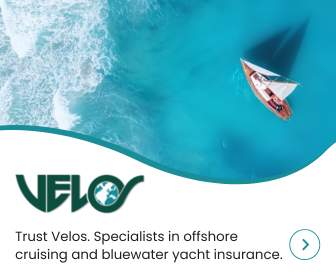Tonga cleans up after devastating Cyclone Gita – how yachties can help
Tongans embark on recovery efforts after getting slammed by Category 4 cyclone. See guidance for yachts planning on visiting Tonga who wish to help with the recovery efforts, at bottom of the report.
Published 7 years ago, updated 1 year ago


From Report by The Sydney Morning Herald.
February 17th, 2018
Thousands of Tongans were affected when Tropical Cyclone Gita tore through the country on February 12. The secondly named cyclone of the South Pacific season damaged the Samoan Islands and was catastrophic for Tonga, with winds of 230km/h flattening parts of Parliament House and causing significant damage and injuries across the kingdom.
Officials said the Category 4 cyclone impacted 70 percent of the population on the main island of Tongatapu and more than 1,000 homes were destroyed or damaged.
Gita hit Tonga around 8 pm on Monday night and peaked between 11 pm and 2 am, slamming on to the south coast of the main island of Tongatapu, bringing down electricity lines, smashing churches and levelling fruit trees and crops vital to the island’s livelihood.
At its peak, winds reached 233km/h – far stronger than predicted, despite Gita not reaching a category five storm as anticipated.
According to the British Met office, Gita is the worst cyclone to pass so close to Tonga’s main islands in 60 years, and communications were lost overnight as Gita ripped the roof off the Tonga meteorological office as well as taking the national broadcaster off air for a time.
Clean-up efforts are underway with disaster response organisations and government agencies doing assessments and distributing relief items.
Local communities have rallied around each other to support aid and recovery efforts.
In Samoa there was extensive flooding, rivers burst their banks and houses were inundated. More than 200 people in Samoa needed emergency shelter. Apia, the capital, measured 425mm of rain over the last four days, the heaviest fall, giving 148mm, during Friday night.
Gita picked up the pace as it left Tonga and banked south for Fiji, however, Fiji escaped major damage from the category four cyclone with no major population centres affected.
Guidance for Yachts
Sea Mercy’s (http://www.seamercy.org/) Clear Horizons program is preparing to respond with desalination units for clean drinking water, emergency shelters for operational hospitals and schools, and disaster response teams to assist the people in need.
President and Founder Richard Hackett sent the following report:
The majority of the damage from Gita in Tonga was on the primary island of Tongatapu and nearby Eua. Although they are the most populated, they also have deep water ports and an international airport to receive deliveries of emergency aid and a road system to distribute the aid to the needed areas. NZ and Australia have committed a great deal of aid and support and are delivering it via the above ports and by a naval vessel and the local Red Cross and other aid agencies are involved also.
The current needs are clean water, food, shelter and agricultural planning (which are being addressed). Although the major needs are covered, there will always be ongoing minor needs.
Yachts Helping:
The desire and ability to help is always important to sailors, however, without an official call for international help (the majority of VAT and customs requirements waived), vessels bringing in aid on their vessels could find such benevolent support incurring VAT taxes, fines and risk of other Customs violations. Which brings us back around to the question of how can yachties help?
- The best way to help is to support the local economies to help them get back on their feet. That means instead of bringing donated goods to the islands, bring extra cash (fundraise before you leave) and purchase needed items (when possible or available) locally to distribute. Sellers will bring more in as needed (or can be afforded). This approach not only makes sure your giving is having an effect, but you keep your vessel light.
- Extra non-perishable provisions that can be shared that might be hard to come by (spices and canned foods) that can be shared when visiting a family wherever you might anchor.
- Basic first aid kits or medical supplies to help meet needs as you see them (or simple water filters for clean water).
Thank you for your hearts and desires to help. We are expanding the ability and ease of yachts to ‘sail with a greater purpose’ in the South Pacific, but we must still follow the direction and desires of our island nation partners. Please give our regards and thanks to the sailing community!
Richard Hackett
President & Founder
Sea Mercy
www.seamercy.org
Related to following destinations: Apia (Upolu), Fiji, Samoa, Tonga
Related to the following Cruising Resources: Cruising Impact, Hurricanes and Tropical Cyclones, Weather







Sea Mercy’s (http://www.seamercy.org/) Clear Horizons program is preparing to respond with desalination units for clean drinking water, emergency shelters for operational hospitals and schools, and disaster response teams to assist the people in need. See their website for more details on how you can help.